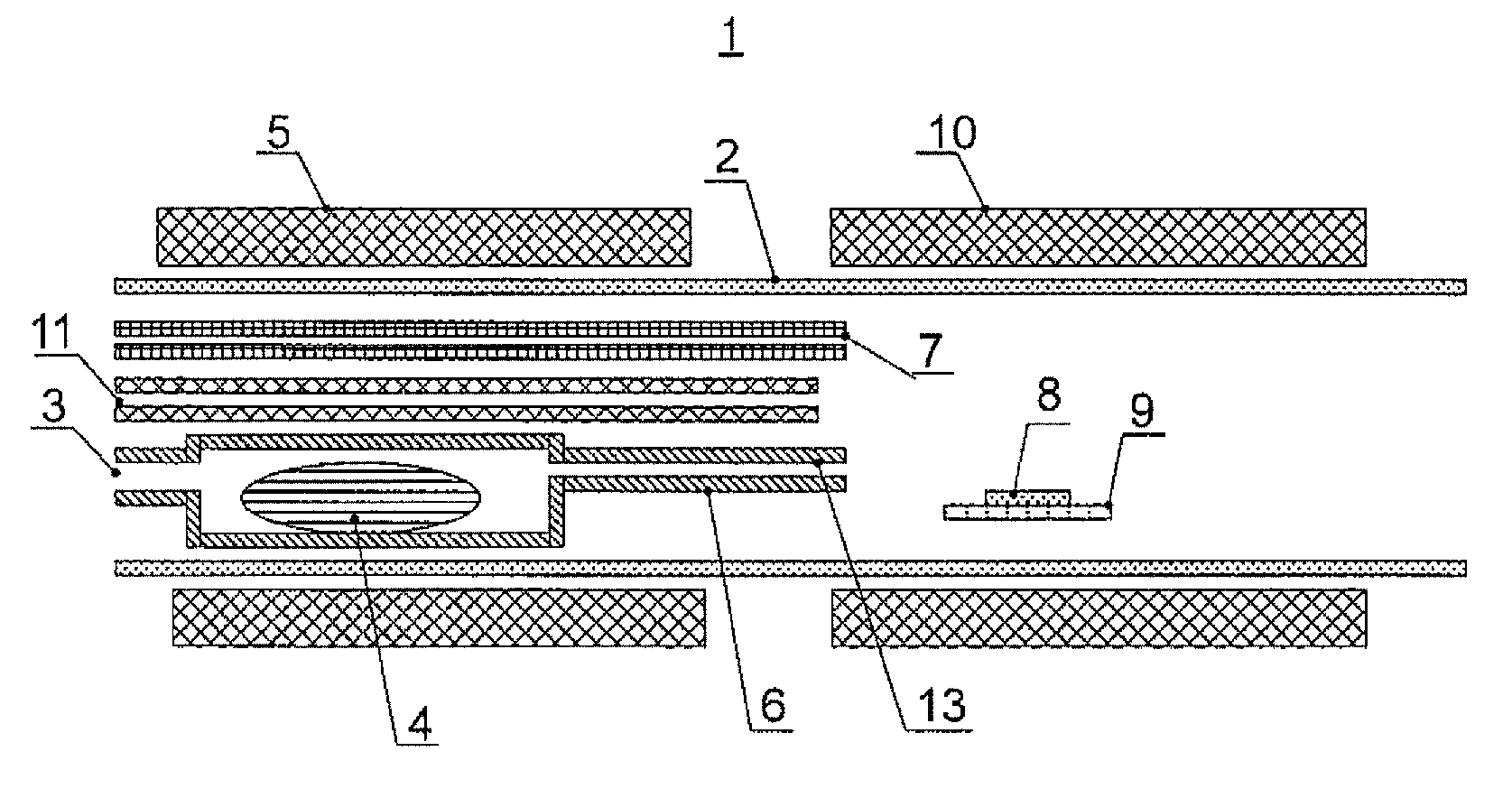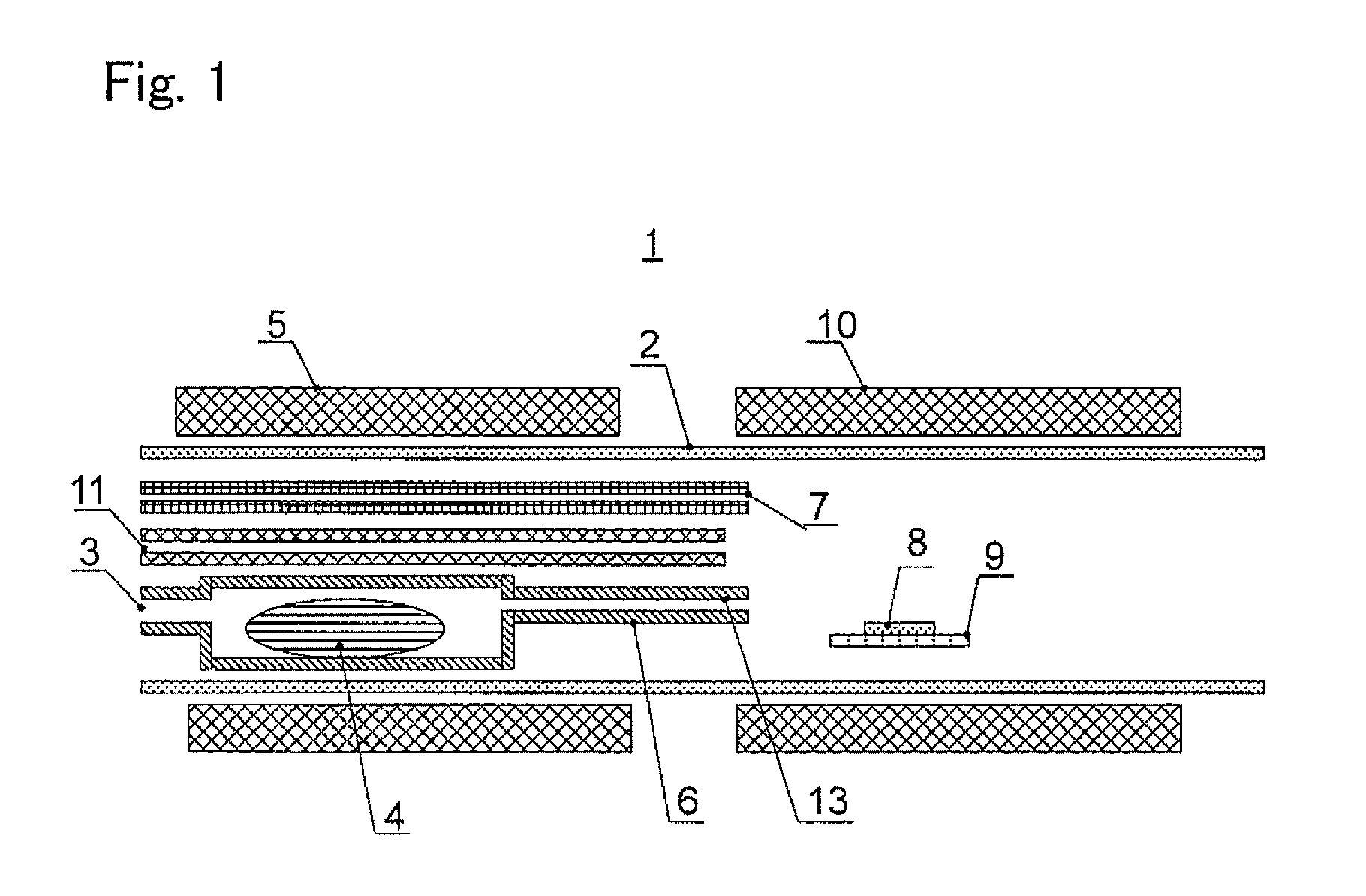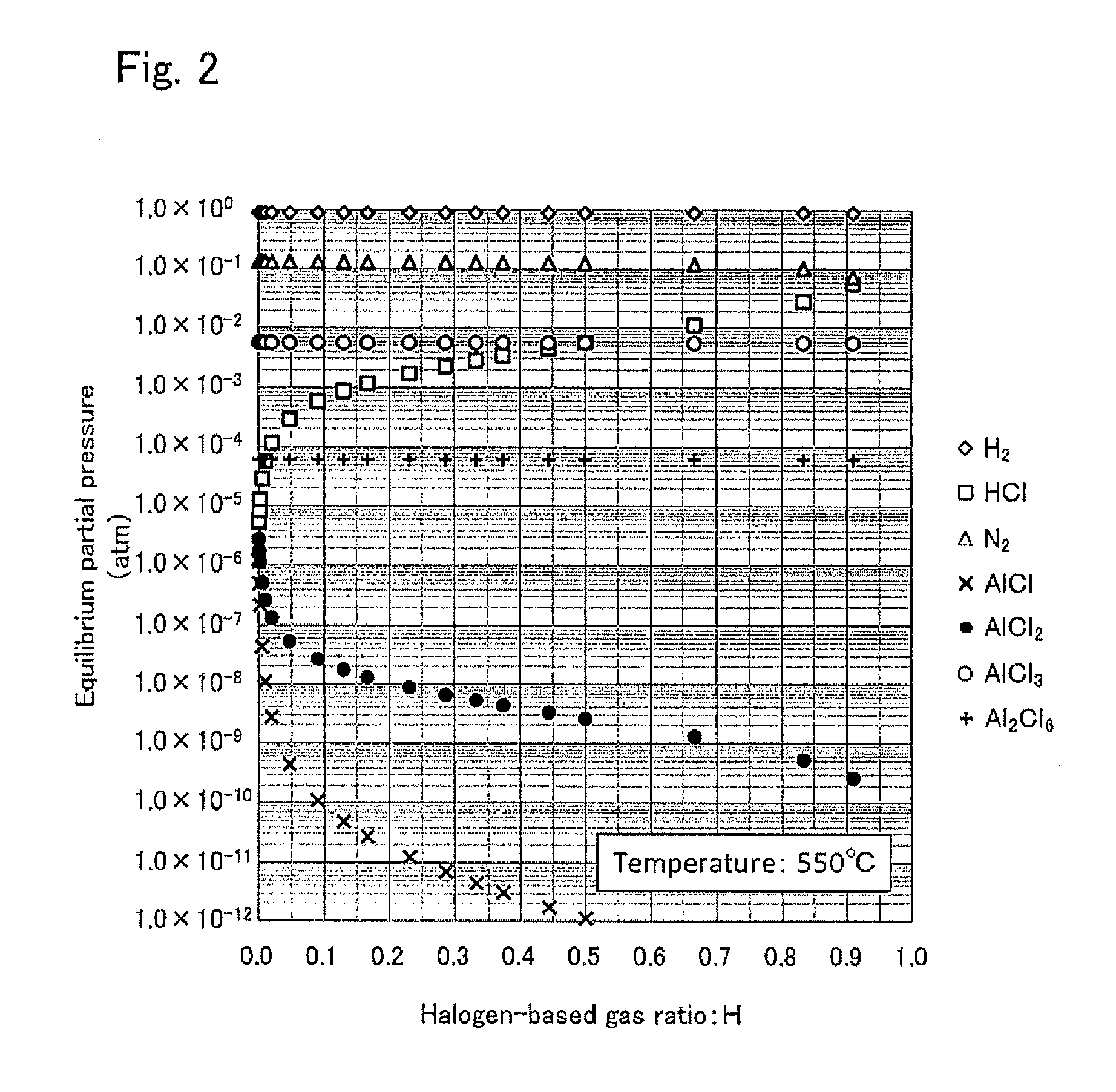Method for manufacturing aluminum-based group iii nitride single crystal
- Summary
- Abstract
- Description
- Claims
- Application Information
AI Technical Summary
Benefits of technology
Problems solved by technology
Method used
Image
Examples
example 1
[0084]In this example, an aluminum nitride single crystal was grown by means of the device 1 shown in FIG. 1, by producing a mixed gas including an aluminum halide gas and an unreacted halogen-based gas, and reacting the mixed gas and a nitrogen source gas.
[0085]The reaction pipe 2 made of silica glass was prepared. A solid aluminum pellet of 99.9999% in purity, 5 mm in diameter and 6 mm in length (total weight 200 g) on a half cylindrical silica glass boat was arranged on the raw material arrangement part 4 on the upstream side. As the external heating means 5, an electric furnace of resistance heating type was arranged outside the reaction pipe 2, and the raw material arrangement part 4 was heated to 400° C. Thereafter, 30 sccm of hydrogen chloride gas was mixed with a carrier gas (consisting of 1560 sccm of hydrogen gas and 210 sccm of nitrogen gas) and supplied to the raw material arrangement part 4. By the reaction of the hydrogen chloride gas and the aluminum, an aluminum chlo...
example 2
[0089]In this example, the crystal was grown with a different halogen-based gas ratio H from that of Example 1. An aluminum nitride crystal film was grown in the same way as in Example 1, except that the filling amount of aluminum on the silica glass boat was changed to 150 g.
[0090]After the crystal was grown, the supply of the hydrogen chloride gas and ammonia gas was stopped and the base substrate was cooled to the room temperature. Thereafter, the mass decrease of the aluminum arranged on the raw material arrangement part 4 was confirmed. Confirmed was 0.664 g of consumption. T×VAl, the product of the aluminum chloride gas supply and the reaction time was calculated as 551 cc (employing an approximation that the all produced aluminum chloride gas was an aluminum trichloride gas). T×VHtotal, the product of the total amount of the hydrogen chloride gas supply and the reaction time was 1800 cc. Therefore T×VH, the product of the coexisting hydrogen chloride gas supply and the reacti...
example 3
[0092]In this example, the crystal was grown with a different halogen-based gas ratio H from that of Examples 1 and 2. An aluminum nitride crystal film was grown in the same way as in Example 1, except that the filling amount of the aluminum on the silica glass boat was changed to 100 g.
[0093]After the crystal was grown, the supply of the hydrogen chloride gas and ammonia gas was stopped, and the base substrate was cooled to the room temperature. Thereafter, the mass decrease of the aluminum arranged on the raw material arrangement part 4 was confirmed. Confirmed was 0.617 g of consumption. T×VAl, the product of the aluminum chloride gas supply and the reaction time was calculated as 512 cc (employing an approximation that the all produced aluminum chloride gas was an aluminum trichloride gas). T×VHtotal, the product of the total amount of the hydrogen chloride gas supply and the reaction time was 1800 cc. Therefore, T×VH, the product of the coexisting hydrogen chloride gas supply a...
PUM
 Login to View More
Login to View More Abstract
Description
Claims
Application Information
 Login to View More
Login to View More - R&D
- Intellectual Property
- Life Sciences
- Materials
- Tech Scout
- Unparalleled Data Quality
- Higher Quality Content
- 60% Fewer Hallucinations
Browse by: Latest US Patents, China's latest patents, Technical Efficacy Thesaurus, Application Domain, Technology Topic, Popular Technical Reports.
© 2025 PatSnap. All rights reserved.Legal|Privacy policy|Modern Slavery Act Transparency Statement|Sitemap|About US| Contact US: help@patsnap.com



